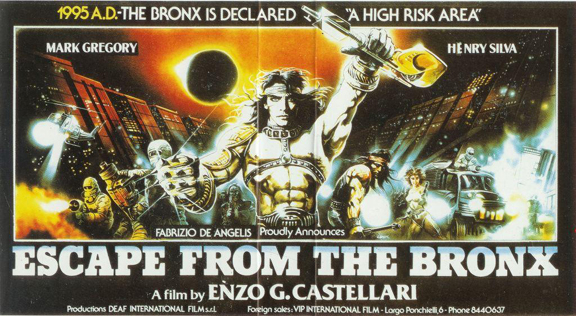We love scary stories. That’s what Halloween was all about–dressing up as something terrifying, if only for a day. Being scary one day a year can be fun. But constant scaremongering is one way that attitudes and beliefs become detached from facts, in ways that can have truly negative effects.
Lately, the presidential campaign has gotten scary on the subject of cities. Republican candidate Donald Trump has described inner cities as a life-threatening no-go zones. As Emily Badger reported in The New York Times, inner cities are “a disaster education-wise, job-wise, safety-wise, in every way possible.” “You walk down the street,” Mr. Trump said in his first debate with Hillary Clinton, “you get shot.” As Emily Badger reports, that’s hardly an accurate picture of most inner cities, including those like the Bronx, which were is the most serious shape two or three decades ago.
As we and others have consistently pointed out, crime rates in US cities have declined sharply over the past two decades. In any other field of endeavor, we’d be celebrating an enormous policy success. When it comes to crime, though, most Americans actually believe just the opposite. While we’re on the subject, the data also show that city living is statistically healthier and safer than life in the suburbs, and that our air is much cleaner than it used to be.
Just like scary movies and teasers for the 11 o’clock television news, violence and danger capture our attention. But it can distort our perception. Despite the facts, its effectively the case that the word “urban” as an adjective is a negative intensifier: as our colleague Carol Coletta points out, if you put “urban” in front of any problem, and it becomes even worse – urban crime is worse than crime, urban congestion is worse than congestion, urban poverty is worse than poverty, urban education is worse than education and urban hopelessness is worse than hopelessness.
What’s particularly ironic about Donald Trump’s rhetoric is that on one level, its a stark contrast to the way that Ronald Reagan talked about cities–back in an era when urban problems were decidedly more severe. Reagan frequently described his vision of a future America as “a shining city on a hill,” a phrase borrowed from Jon Winthrop.
Highlighting our fears is a great way to garner attention. But it may not be a good way to advance understanding or actually solve problems. It may simply lead us to be discouraged and fatalistic. Pessimism has no survival value.
At City Observatory, we’ve tried to describe cities in terms of their assets and potential. When we do things right, cities are powerful vehicles for encouraging innovation and economic progress, promoting widespread opportunity, achieving greater sustainability, and bringing people together. If anything, our problem is that we have a shortage of cities: we face housing affordability problems because more people want to live in cities than our current housing stock can accommodate. We really ought to be re-framing our discussion of cities in optimistic and aspirational terms: how do we build cities for everyone that make our nation stronger and better?
In another week, the election season will be over. Maybe then, we can rededicate ourselves to a more fundamentally positive view of what we might accomplish together.


